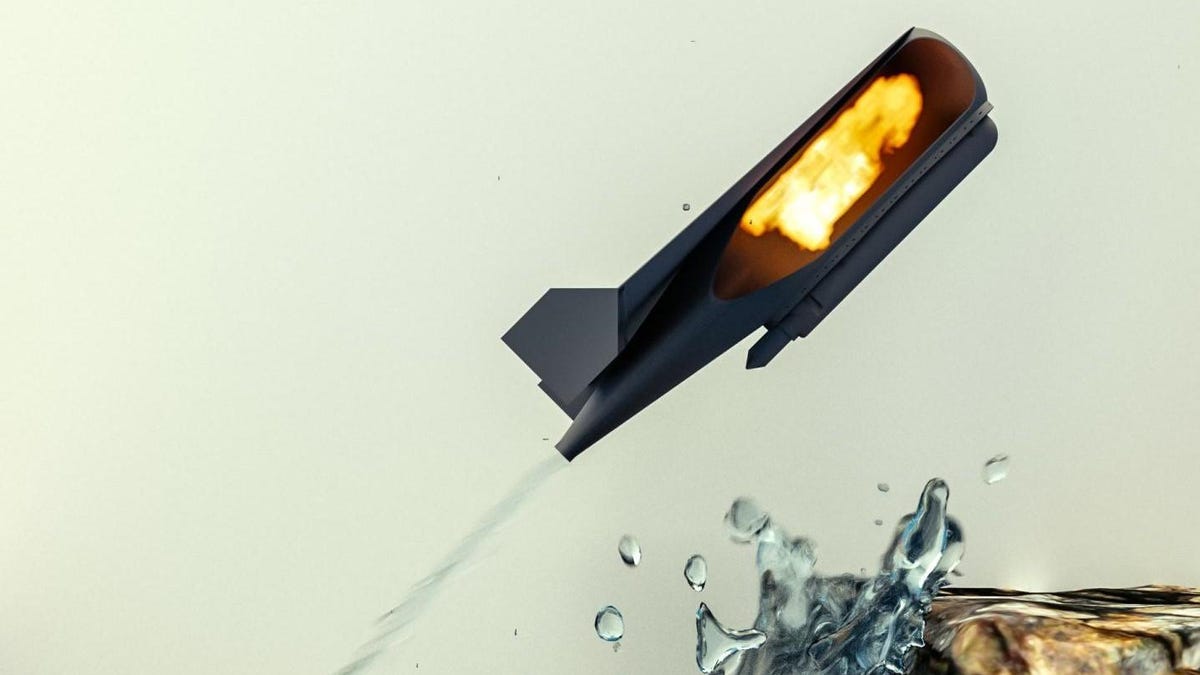'Flying fish' robot propels itself by shooting water out of its butt
The majestic bot can leap out of the water and glide through the air. No need to worry.

This illustration shows the combustion in side the robot propelling it out of the water.
Engineers often look to nature for inspiration when creating robots . Just look at Astro the robot dog or the antelope-like SpaceBok. But robots aren't just useful on land. So how about a flying-fish robot?
A team with the Aerial Robotics Laboratory at the Imperial College London in the UK has developed a floating robot that can shoot a jet of water out of its rear to propel itself through the air.
The robot is shaped like a little airplane. A video released by the college showcases its aerial acrobatics in slow motion.
What's innovative about this particular robot is its clever propulsion system. Water and calcium-carbide powder mix together in a reaction chamber, creating acetylene gas that ignites, expands and pushes water out to propel the robot. It's a powerful combination that allows the robot to glide in the air for up to 85 feet (26 meters).
"Water-to-air transition is a power-intensive process, which is difficult to achieve on a small-scale flying vehicle that needs to be lightweight for flight," said Aerial Robotics Laboratory director Mirko Kovac. The only moving part is a pump that mixes the water and powder.
The researchers published details on the robot on Wednesday in the journal Science Robotics. The robot has already been tested in both lab and outdoor settings. It braved a wave tank to see if it could still leap when in rougher water conditions. It could.
"These kinds of low-power, tether-free robots could be really useful in environments that are normally time- and resource-intensive to monitor, including after disasters such as floods or nuclear accidents," said the paper's lead author Raphael Zufferey.
While it's fun to speculate about a future robopocalypse, this particular robot looks like it wants to be helpful to humans. The development process is continuing with an eye on using the machine to monitor around coral reefs and offshore platforms.
Go forth, flying-fish-bot. We're rooting for you.
Originally published Sept. 11, 12:18 p.m. PT.

